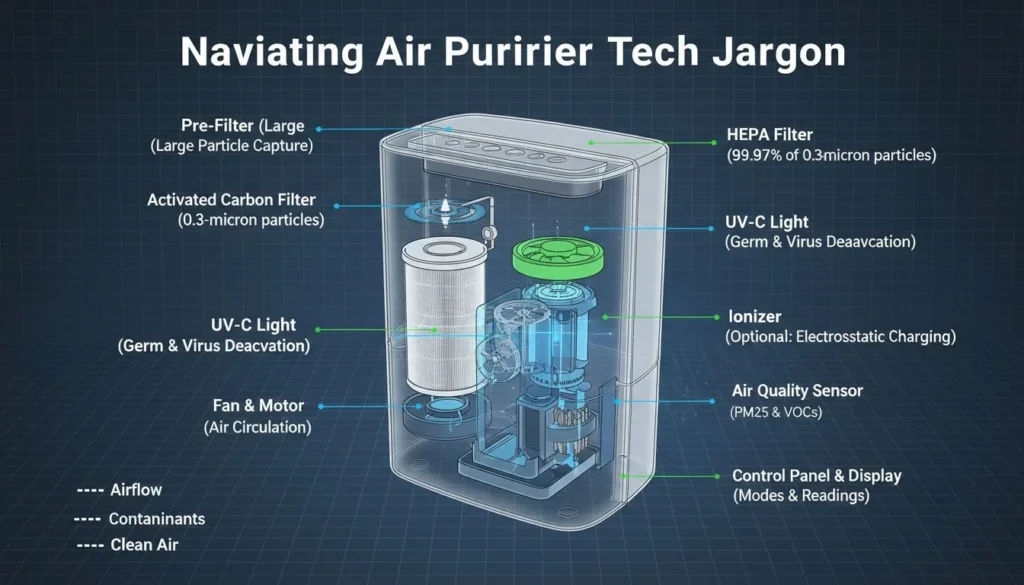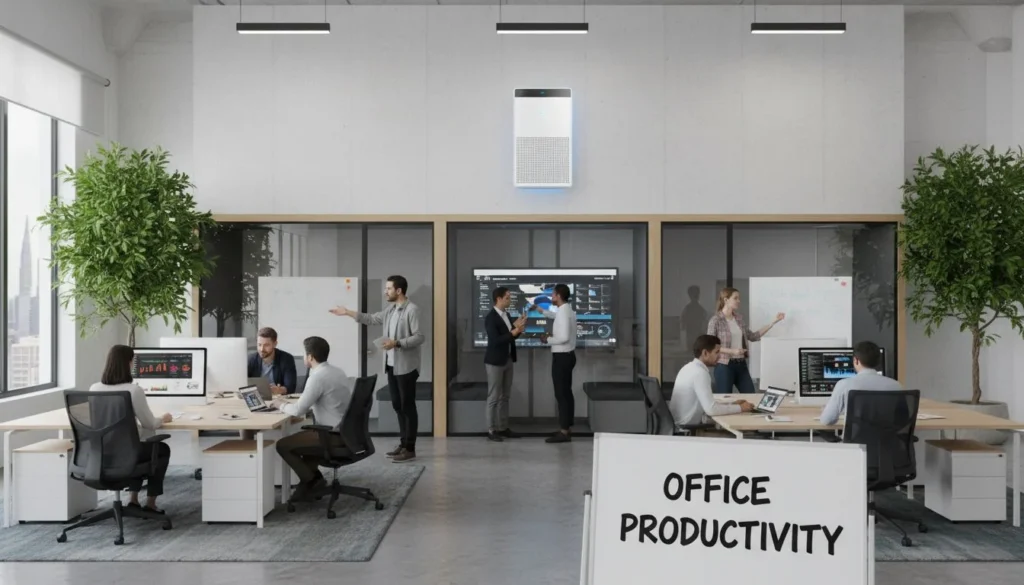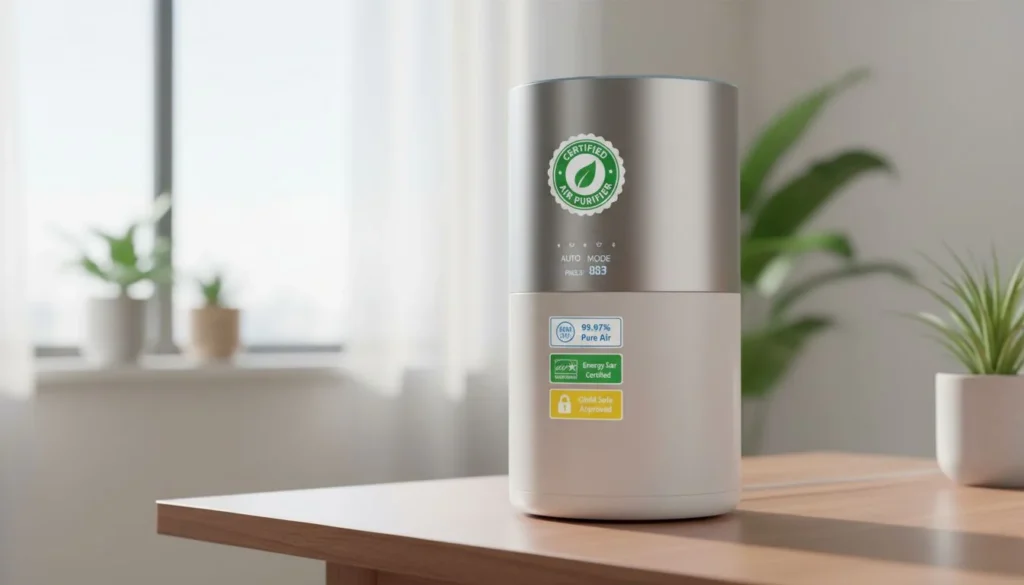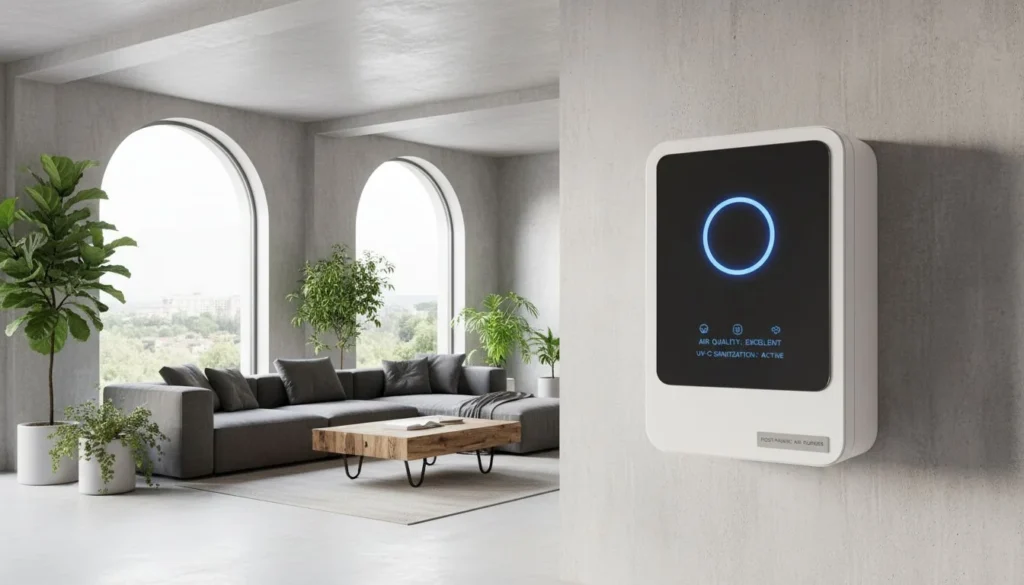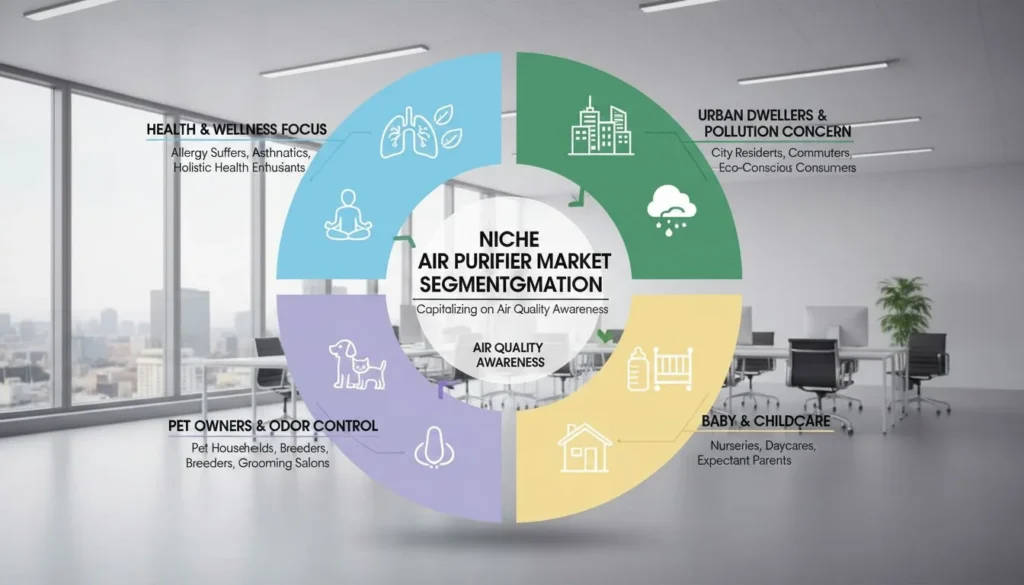
Вы решили приобрести воздухоочиститель для борьбы с пылью в вашем доме? Присоединяйтесь ко мне, и мы раскроем тайну этих устройств и узнаем, действительно ли они выполняют свое обещание очистить воздух!
Очистители воздуха, особенно True HEPA Модели высокоэффективны в борьбе с пылью, улавливая 99,97% частиц размером до 0,3 микрона. Это делает их отличным выбором для улучшения качества воздуха в помещении.
Несмотря на многообещающую эффективность очистителей воздуха, понимание нюансов различных моделей и технологий имеет решающее значение. В этом блоге мы расскажем о том, как работают эти устройства, каковы их преимущества и на что следует обратить внимание перед покупкой.
Фильтры HEPA задерживают 99,97% частиц размером 0,3 микрона.Правда
Фильтры истинного HEPA предназначены для высокоэффективного улавливания частиц размером до 0,3 микрона.
Что делает правду HEPA Насколько эффективны фильтры?
Правда HEPA Фильтры славятся своей способностью задерживать 99,97% частиц воздуха размером 0,3 микрона, но что именно способствует такой эффективности?
Правда HEPA Фильтры эффективны благодаря своей плотной волокнистой конструкции и способности задерживать мельчайшие частицы, такие как пыль, пыльца и дым. Протестированные в сторонних лабораториях, они обеспечивают эффективность фильтрации 99,97% для частиц размером 0,3 микрона и более, защищая здоровье и значительно улучшая качество воздуха.
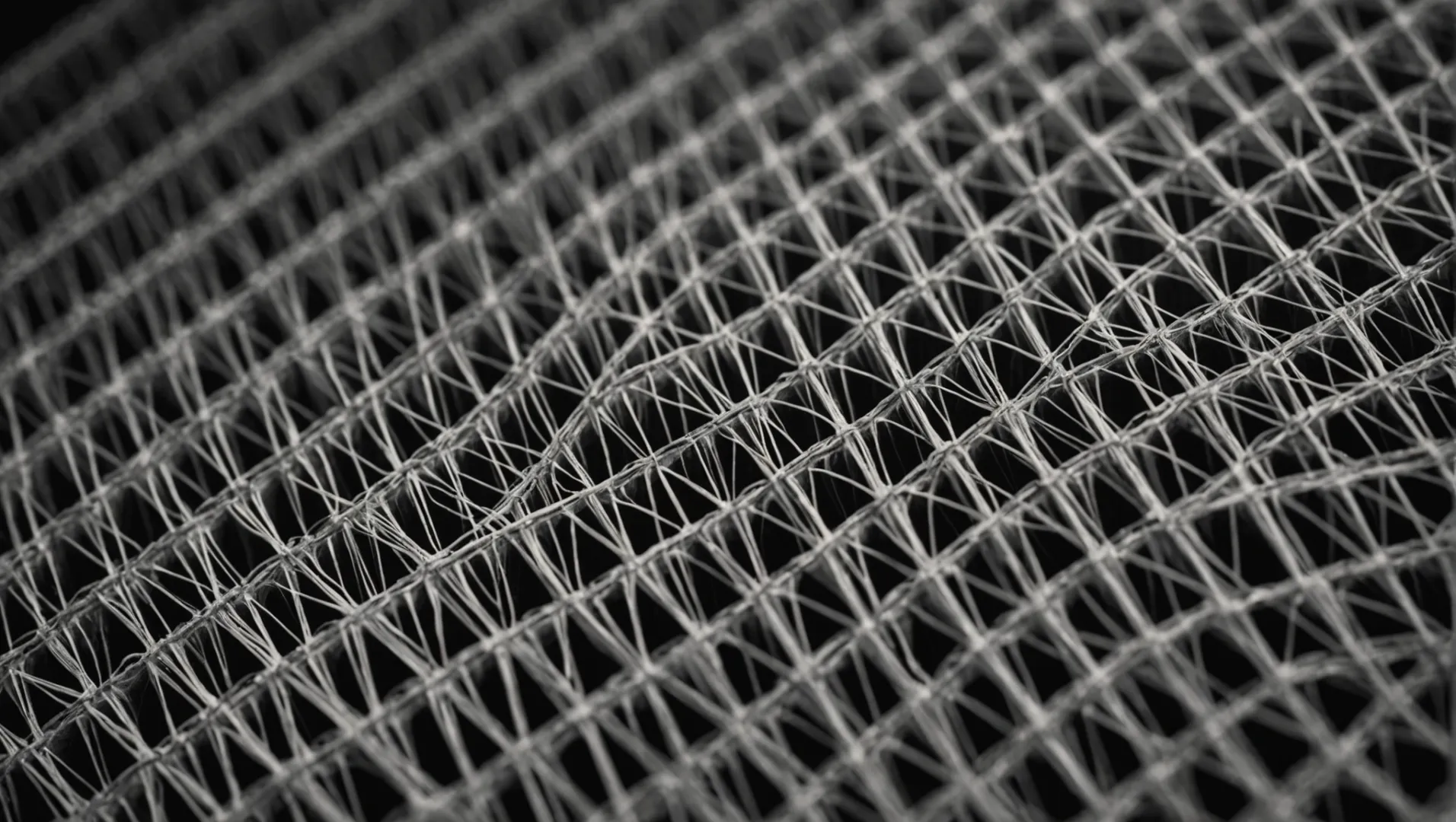
Понимание механизма, лежащего в основе истинного HEPA Фильтры
Ключ к эффективности Правда HEPA фильтры1 заключается в их сложной конструкции. В конструкции этих фильтров используются плотно упакованные слои волокон, которые создают мат, предназначенный для улавливания частиц путем диффузии, перехвата и уплотнения.
- Диффузия: Крошечные частицы сталкиваются с молекулами газа и задерживаются в волокнах из-за их неустойчивого движения.
- Перехват: Поток воздуха подносит частицы достаточно близко к волокну, позволяя им прилипать к нему.
- Импакция: Более крупные частицы, движущиеся по прямой траектории, сталкиваются непосредственно с волокнами и задерживаются.
Такой многогранный подход позволяет True HEPA фильтры для улавливания мельчайших частиц, таких как пыль, пыльца, споры плесени и даже дым.
Применение в реальном мире и преимущества
В условиях, подверженных лесные пожары2Например, в некоторых районах США, Правда HEPA фильтры играют решающую роль. Они могут эффективно удалять из воздуха частицы дыма, размер которых обычно составляет менее 1 микрона. Если закрыть окна и использовать высокоэффективный True HEPA Очиститель воздуха в турбо-режиме не менее часа, вы сможете добиться значительного воздухообмена, улучшив качество воздуха в помещении.
| Характеристики | Правда HEPA Эффективность фильтра |
|---|---|
| Удаление частиц по размеру | Захватывает 0,3 микрона и больше |
| Эффективность фильтрации | 99.97% |
| Общее использование | Уменьшение аллергии, дыма, пыли |
| Польза для здоровья | Снижает риск возникновения респираторных заболеваний |
Сравнение с другими технологиями
Хотя существуют такие технологии, как ультрафиолетовое излучение и ионизаторы, они не могут сравниться по эффективности с True HEPA Фильтры улавливают частицы. Ультрафиолетовое излучение в большей степени направлено на уничтожение бактерий и вирусов, в то время как ионизаторы работают за счет электрического заряда частиц. Однако эти технологии могут неэффективно задерживать все загрязняющие воздух частицы.
Для тех, кто страдает от аллергии на пыль или живет в районах с плохим качеством воздуха, True HEPA Очиститель воздуха часто рекомендуется по сравнению с другими вариантами из-за его превосходства удаление пыли3 возможности.
Фильтры HEPA задерживают 99,97% частиц размером 0,3 микрона.Правда
Настоящие фильтры HEPA проходят испытания, чтобы гарантировать, что они задерживают 99,97% частиц.
Ультрафиолетовое излучение более эффективно, чем фильтры HEPA, для удаления пыли.Ложь
Фильтры HEPA эффективнее улавливают частицы пыли, чем ультрафиолетовое излучение.
Могут ли очистители воздуха помочь при аллергии и респираторных заболеваниях?
Страдаете от аллергии или проблем с дыханием дома? Узнайте, может ли очиститель воздуха стать вашим решением, чтобы дышать легче.
Очистители воздуха, особенно с функцией True HEPA фильтры, значительно облегчающие аллергию и проблемы с дыханием, задерживая аллергены и загрязняющие вещества размером всего 0,3 микрона.
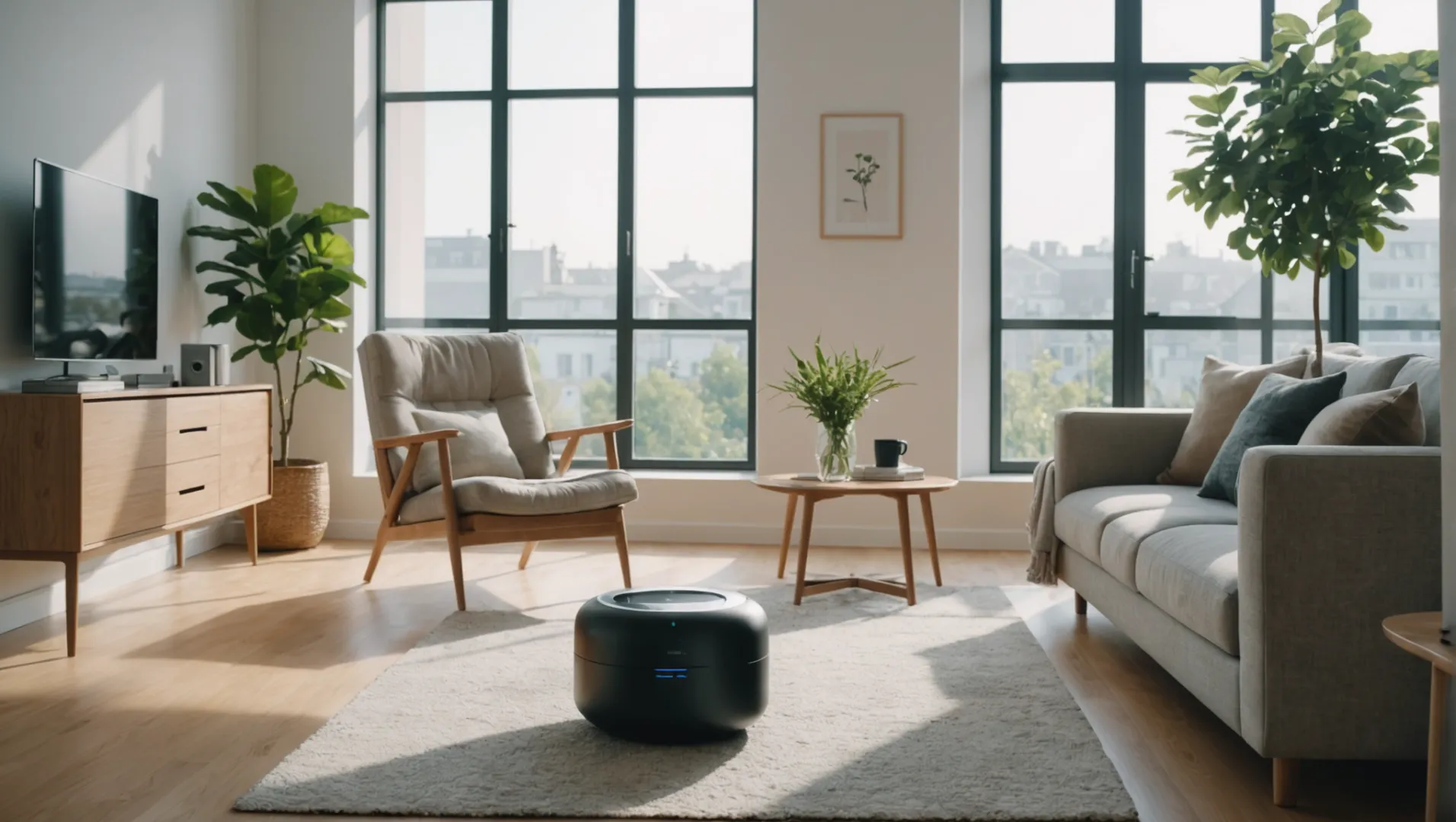
Понимание аллергенов в воздухе и их воздействия
Аллергены, такие как пылевые клещи, пыльца, перхоть домашних животных и споры плесени, являются распространенными загрязнителями воздуха в помещении, которые вызывают аллергию и респираторные заболевания. Эти частицы могут вызывать такие симптомы, как чихание, заложенность носа, кашель и даже приступы астмы. Воздухоочистители с Правда HEPA фильтры4 разработаны для улавливания этих крошечных раздражителей, уменьшая их присутствие в вашем жилом пространстве.
Как правда HEPA Работа фильтров
Правда HEPA фильтры отличаются высокой эффективностью улавливания частиц, находящихся в воздухе. Они способны задерживать до 99,97% частиц размером до 0,3 микрона, что делает их особенно эффективными для аллергиков. При правильном использовании они могут значительно снизить концентрацию аллергенов в воздухе, тем самым минимизируя симптомы аллергии.
Преимущества очистителей воздуха для здоровья дыхательных путей
Для людей, страдающих от респираторных заболеваний, таких как астма или хроническая обструктивная болезнь легких (ХОБЛ), поддержание чистоты воздуха имеет решающее значение. Удаляя вредные загрязняющие вещества, воздухоочистители могут предотвратить обострение этих заболеваний. Во время таких событий, как сезоны лесных пожаров5В условиях резкого увеличения количества дыма и других загрязняющих веществ очиститель воздуха может стать жизненно важным инструментом для защиты здоровья дыхательных путей.
Дополнительные технологии в очистителях воздуха
Пока правда HEPA Некоторые воздухоочистители оснащены дополнительными технологиями, такими как фильтры с активированным углем, ультрафиолетовое излучение или ионизаторы, чтобы еще больше улучшить качество воздуха. Эти функции помогают нейтрализовать запахи или уничтожить бактерии и вирусы, предлагая более комплексное решение для тех, кто страдает от сильной аллергии или проблем с дыханием.
Советы по оптимальному использованию
Чтобы получить максимальную пользу от очистителя воздуха, примите во внимание следующие советы:
- Размещение: Расположите очиститель в местах, где вы проводите больше всего времени, например, в спальнях или гостиных.
- Регулярное обслуживание: Очищайте или заменяйте фильтры в соответствии с инструкциями производителя для обеспечения эффективности.
- Размер комнаты: Выберите модель, соответствующую размеру вашей комнаты, для оптимальной работы.
Понимая принцип работы различных типов воздухоочистителей и их конкретные преимущества, вы сможете принять взвешенное решение, которое наилучшим образом удовлетворит ваши потребности и улучшит качество воздуха в помещении.
Фильтры HEPA задерживают 99,97% частиц.Правда
Фильтры HEPA предназначены для улавливания частиц размером до 0,3 микрона.
Очистители воздуха устраняют все аллергены в помещении.Ложь
Несмотря на свою эффективность, воздухоочистители не могут удалить 100% всех аллергенов.
Как очистители воздуха работают во время пожаров?
Лесные пожары выделяют опасную смесь дыма и мелких частиц. Могут ли очистители воздуха принести облегчение в такие периоды?
Очистители воздуха с функцией True HEPA Фильтры эффективны в период лесных пожаров, улавливая частицы дыма и значительно улучшая качество воздуха в помещениях. Постоянно работая в пострадавших районах, они помогают снизить воздействие вредных загрязняющих веществ.
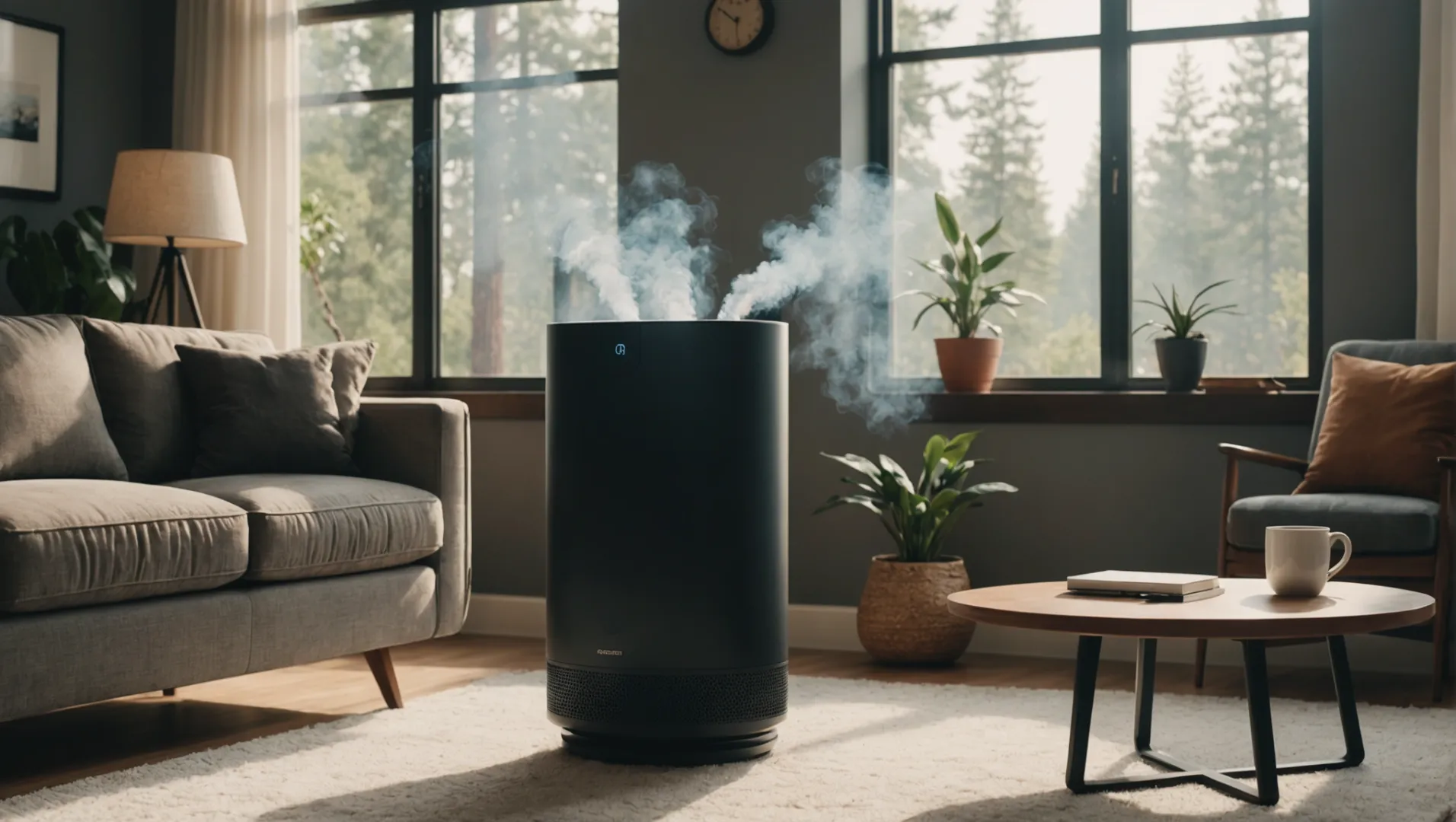
Понимание воздействия дыма от лесных пожаров
Лесные пожары производят целый коктейль вредных веществ, включая мелкие твердые частицы (PM2.5), угарный газ и летучие органические соединения (ЛОС). Эти загрязняющие вещества могут проникать глубоко в легкие и усугублять состояние дыхательных путей. Во время таких событий качество воздуха на улице ухудшается, что сказывается даже на состоянии помещений.
Роль истинного HEPA Фильтры
Правда HEPA Фильтры, сертифицированные на улавливание 99,97% частиц размером до 0,3 микрона, идеально подходят для борьбы с дымом от лесных пожаров. Они эффективно задерживают мельчайшие частицы, из которых состоит дым, значительно улучшая качество воздуха в помещении. Помимо дыма, эти фильтры также удаляют пыль и аллергены.
Оптимизация использования очистителя воздуха во время лесных пожаров
- Размещение: Расположите воздухоочиститель в комнатах, где вы проводите больше всего времени.
- Режим: Для быстрой очистки воздуха используйте турбо- или высокопроизводительный режим.
- Продолжительность: Запускайте очиститель постоянно, особенно когда показатели качества воздуха показывают повышенный уровень загрязнения.
- Уплотнение: Держите окна и двери закрытыми, чтобы дым с улицы не проникал в ваш дом.
| Режим | Скорость воздухообмена | Рекомендуемое применение |
|---|---|---|
| Турбо | 5-6 раз/час | В периоды пикового загрязнения |
| Нормальный | 3-4 раза в час | Регулярное использование для поддержания качества воздуха |
Ограничения и дополнительные соображения
Пока правда HEPA Фильтры очень эффективны, но важно отметить, что они не удаляют такие газы, как угарный газ. Для комплексной защиты следует выбирать модели с фильтрами из активированного угля, поглощающими запахи и газообразные загрязнители. Кроме того, регулярное обслуживание фильтров имеет решающее значение для обеспечения оптимальной работы.
Эффективность истинного HEPA в разделе "Фильтрация дыма6: Узнайте больше о том, почему эти фильтры предпочтительны во время лесных пожаров.
Альтернативные технологии очистки воздуха7: Изучите другие технологии, такие как ультрафиолетовое излучение и ионизаторы, и их эффективность против дыма и пыли.
Быть в курсе местные показатели качества воздуха8 поможет вам решить, когда следует активировать очиститель воздуха, и настроить параметры для достижения максимального эффекта.
Фильтры HEPA удаляют 99,97% частиц дыма.Правда
Настоящие фильтры HEPA улавливают частицы размером до 0,3 микрона, включая дым.
Очистители воздуха могут устранить угарный газ из дыма лесных пожаров.Ложь
Фильтры HEPA не удаляют газы; необходимы фильтры с активированным углем.
Есть ли альтернативы HEPA Очистители воздуха для борьбы с пылью?
HEPA Воздухоочистители славятся своей эффективностью в борьбе с пылью, но есть ли другие подходящие варианты?
Альтернативы HEPA К очистителям воздуха относятся электростатические воздухоочистители, фильтры с активированным углем и ионизаторы. Хотя они могут помочь в борьбе с пылью, их эффективность варьируется по сравнению с True HEPA модели.

Исследование электростатических воздухоочистителей
Электростатические воздухоочистители используют электрически заряженные пластины для улавливания частиц пыли. Эти устройства могут быть эффективны для крупных частиц, но они могут не так эффективно улавливать мелкие частицы, как True HEPA фильтры. Обслуживание этих систем включает в себя частую очистку пластин для обеспечения оптимальной производительности.
Фильтры с активированным углем
Фильтры из активированного угля известны прежде всего тем, что удаляют запахи и газы, а не твердые частицы пыли. Однако они часто используются в сочетании с другими системами фильтрации для улучшения общего качества воздуха. Они могут стать дополнительным выбором наряду с другими методами, но сами по себе могут оказаться недостаточными для значительного удаления пыли.
Ионизаторы: Плюсы и минусы
Ионизаторы выпускают в воздух заряженные ионы, которые прикрепляются к частицам пыли, делая их достаточно тяжелыми, чтобы они упали на землю. Хотя этот метод позволяет уменьшить количество пыли в воздухе, он не удаляет частицы из окружающей среды полностью. Некоторые ионизаторы также могут вырабатывать озон, что может повлиять на качество воздуха в помещении.
Сравнение альтернатив
| Метод | Эффективность в отношении пыли | Дополнительные преимущества |
|---|---|---|
| HEPA Очистители воздуха | Высокий | Эффективна против мелких частиц |
| Электростатические воздухоочистители | Умеренный | Регулярная чистка может быть экономически эффективной |
| Фильтры с активированным углем | Низкий | Превосходно удаляет запахи |
| Ионизаторы | Переменная | Может помочь уменьшить количество пыли, но может производить озон |
При рассмотрении альтернатив Правда HEPA очистители воздуха9При этом необходимо оценить ваши конкретные потребности, например, размер помещения и наличие дополнительных проблем, таких как запахи или химические испарения. Сочетание нескольких методов может стать комплексным решением для улучшения качества воздуха в помещении.
Электростатические воздухоочистители улавливают более мелкие частицы, чем HEPA.Ложь
Электростатические очистители менее эффективны в отношении мелких частиц, чем HEPA.
Ионизаторы могут вырабатывать озон, влияющий на качество воздуха в помещении.Правда
Некоторые ионизаторы выделяют озон, который может повлиять на качество воздуха.
Заключение
На своем пути к чистому воздуху я обнаружил, что True HEPA фильтры - это эффективное решение для уменьшения количества пыли и улучшения качества воздуха в помещении. Выбирайте их с умом, исходя из ваших условий и конкретных потребностей.
-
Подробно изучите принцип работы фильтров True HEPA: Высокоэффективный сажевый фильтр (HEPA) может удалять 99,97% - 99,99% частиц, находящихся в воздухе, размер которых равен, меньше или больше 0,3 микрона. ↩
-
Узнайте, как фильтры HEPA эффективно справляются с частицами дыма..: И правда - воздушные фильтры HEPA исключительно хорошо удаляют из воздуха частицы такого размера. ↩
-
Найдите лучшие воздухоочистители, специально предназначенные для борьбы с пылью: За последние девять лет мы протестировали более 60 воздухоочистителей, и исключительный Coway Airmega AP-1512HH Mighty стал нашим лучшим выбором среди них. ↩
-
Узнайте об эффективности и функциях фильтров True HEPA: Высокоэффективный сажевый фильтр (HEPA) может удалять 99,97% - 99,99% частиц, находящихся в воздухе, размер которых равен, меньше или больше 0,3 микрона. ↩
-
Узнайте, как работают очистители воздуха в условиях повышенной задымленности и загрязнения: Комнатные воздухоочистители могут помочь удалить мелкие частицы из воздуха в вашем доме во время задымления, вызванного лесными пожарами. ↩
-
Поймите, почему фильтры True HEPA превосходно улавливают частицы дыма: Воздушные фильтры истинного НЕРА исключительно хорошо удаляют из воздуха частицы такого размера. Наши лучшие фильтры, Coway AP-1512HH и почти ... ↩
-
Узнайте о других технологиях очистки воздуха и их эффективности: Примерами проактивной очистки являются генераторы ионов, фотокаталитическое окисление и запатентованная технология ActivePure. ↩
-
Доступ к данным в режиме реального времени для мониторинга местных условий качества воздуха..: Карта пожаров и дыма AirNow включает в себя данные, полученные с помощью краудсорсинга от тысяч датчиков качества воздуха, в дополнение к данным от тысяч постоянных мониторов PM2.5 ... ↩
-
Узнайте об эффективности и возможностях фильтров True HEPA: Фильтры True HEPA служат дольше и могут работать 24 часа в сутки 365 дней в году. Вы можете эффективно удалять пыль, перхоть домашних животных, пыльцу, плесень, бактерии, ... ↩


